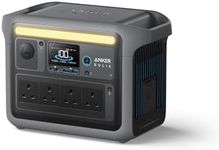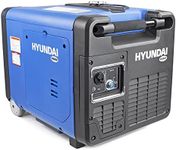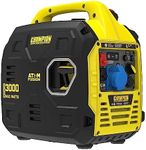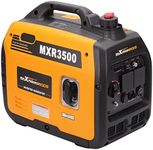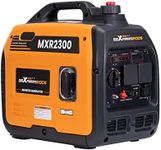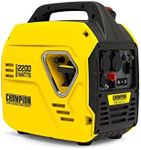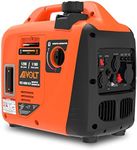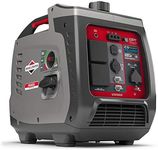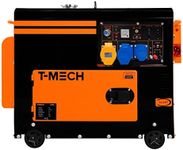Buying Guide for the Best Portable Generators
Choosing the right portable generator can be a crucial decision, especially if you need reliable power for outdoor activities, emergencies, or job sites. To make an informed choice, it's important to understand the key specifications and how they relate to your specific needs. Here are the main factors to consider when selecting a portable generator.Power Output (Wattage)Power output, measured in watts, indicates how much electrical power the generator can produce. This is important because it determines what devices and appliances you can run simultaneously. Generators typically range from 1,000 watts to over 10,000 watts. For small appliances and electronics, a lower wattage (1,000-2,000 watts) may suffice. For larger appliances or multiple devices, you might need a mid-range (3,000-5,000 watts) or high wattage (6,000+ watts) generator. Assess your power needs by listing the wattage requirements of the devices you plan to use.
Fuel TypePortable generators can run on various types of fuel, including gasoline, propane, and diesel. Gasoline is widely available and convenient but can be less efficient and has a shorter shelf life. Propane is cleaner and has a longer shelf life but requires a separate tank. Diesel is efficient and has a longer runtime but can be more expensive and less readily available. Choose a fuel type based on availability, storage, and your preference for efficiency and environmental impact.
RuntimeRuntime refers to how long a generator can operate on a full tank of fuel. This is crucial for planning how long you can rely on the generator without needing to refuel. Generators with longer runtimes are beneficial for extended use, such as during power outages or long outdoor events. Typically, runtimes can range from a few hours to over 12 hours. Consider your usage scenario and how often you can or want to refuel when choosing a generator with an appropriate runtime.
PortabilityPortability is determined by the generator's weight, size, and design features like wheels and handles. If you need to move the generator frequently or transport it to different locations, a lighter and more compact model with easy-to-use mobility features is ideal. For stationary use, such as at home during power outages, portability may be less critical. Evaluate how often and where you will be using the generator to decide on the right level of portability.
Noise LevelNoise level, measured in decibels (dB), indicates how loud the generator will be during operation. This is important for comfort and compliance with noise regulations, especially in residential areas or campsites. Generators can range from very quiet (50-60 dB) to quite loud (70+ dB). If noise is a concern, look for models specifically designed to operate quietly. Consider where you will be using the generator and how much noise is acceptable in that environment.
Starting MechanismThe starting mechanism can be manual (pull-start) or electric (push-button or remote start). Manual start generators are typically more affordable but require physical effort to start. Electric start generators are more convenient and easier to use, especially in cold weather or for those with limited physical strength. Choose a starting mechanism based on your preference for convenience and ease of use.
Safety FeaturesSafety features such as overload protection, low-oil shutoff, and circuit breakers are crucial for preventing damage to the generator and connected devices. These features help ensure safe operation and protect both the generator and your appliances from potential hazards. Look for models with comprehensive safety features to ensure reliable and safe use, especially if you plan to use the generator frequently or in varied conditions.

